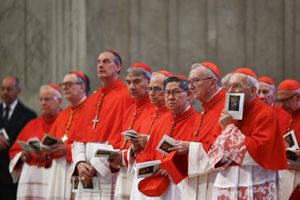On March 14, mathematicians and enthusiasts worldwide celebrate Pi Day, a day dedicated to the mathematical constant π (pi). This celebration is particularly notable as it coincides with both Albert Einstein’s birthday in 1879 and the death anniversary of the renowned physicist Stephen Hawking in 2018.
The significance of pi lies in its fundamental role in mathematics, representing the ratio of a circle’s circumference to its diameter. Pi is an irrational number, meaning it cannot be expressed as a simple fraction and its decimal representation goes on infinitely without repeating. The Greek letter π was first employed in 1706 by Welsh mathematician William Jones, who drew inspiration from the words “periphery” and “perimeter.”
Much of the history of pi can be traced back to ancient civilizations, with Indian mathematician Aryabhata (476-550 CE) famously calculating an approximate value of pi as 3.1416 in his influential work, "Aryabhatiya." His studies laid a foundation for future endeavors in mathematics, specifically in the realm of circular calculations.
Further advancements were made by the Indian mathematician Srinivasa Ramanujan, who in 1914 published formulas that would enable the calculation of pi to millions of digits. His methodologies and innovative approaches to mathematical problems have had a lasting impact on the field.
Today, the applications of pi extend far beyond traditional mathematics. It is essential in physics and engineering, particularly for calculating properties of circles and spheres, solving wave equations, and designing structures. Pi's relevance spans various industries, from architecture to aerospace. For instance, the Indian Space Research Organisation (ISRO) relies on pi to determine orbital paths for satellites and plan spacecraft trajectories, highlighting its critical importance in modern technology.
In everyday life, pi’s influence can even be observed in the construction of domes and bridges, showcasing its foundational role within both scientific and practical realms.
This year, Pi Day was marked with festivities beyond just mathematical observance. In Bakersfield, California, Heather Laganelli from The Locale Farm to Table Eatery joined the morning television segment "17 News at Sunrise" to celebrate Pi Day by preparing a key lime pie. Laganelli shared tips on how to achieve a perfect, smooth slice by ensuring the crust has the right texture to avoid crumbling.
"To have a perfect and smooth slice of pie, pareve the crust so as to prevent it from crumbling," Laganelli advised during the segment. Her culinary approach reflects a tangible way to celebrate the day, combining the love for mathematics with delicious food.
Pi Day continues to inspire many, merging mathematical discovery with cultural traditions. As students and enthusiasts share an array of pi-themed activities, they find creative ways to acknowledge the significance of this seemingly simple constant that governs so much of our understanding of the universe.
As schools and institutions engage students with activities centered around pi, including pie-eating contests, lectures on its historical significance, or explorations of pi's computation, the legacy of this day continues to grow. Each celebration fosters a deeper appreciation for the intersection of mathematics and everyday life, all while honoring the monumental contributions of figures such as Aryabhata and Ramanujan.
Whether it’s making a pie in a kitchen, calculating the circumference of circular objects, or discussing the implications of π in advanced mathematics, March 14 stands as a reminder of how integral pi is to both academic pursuits and our collective cultural heritage.







